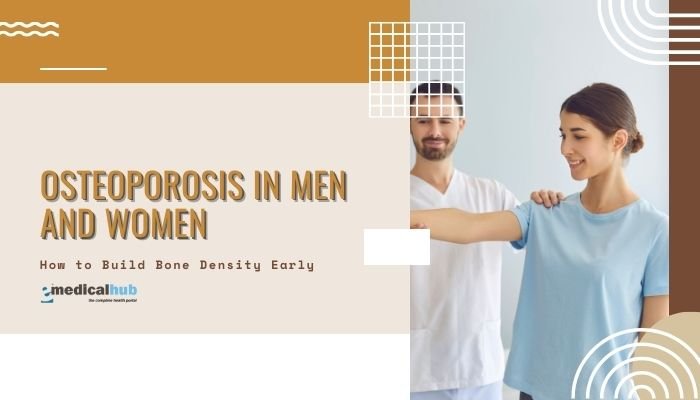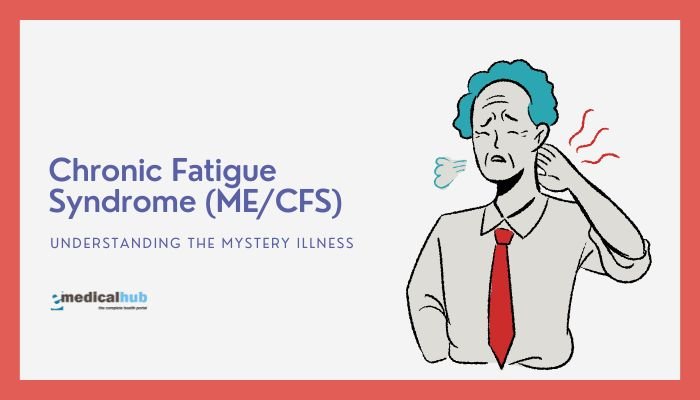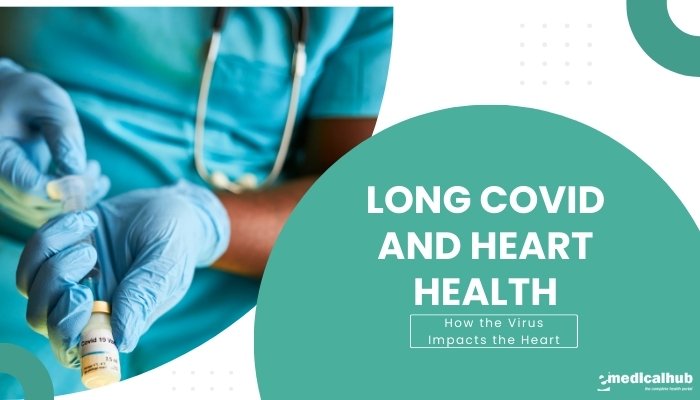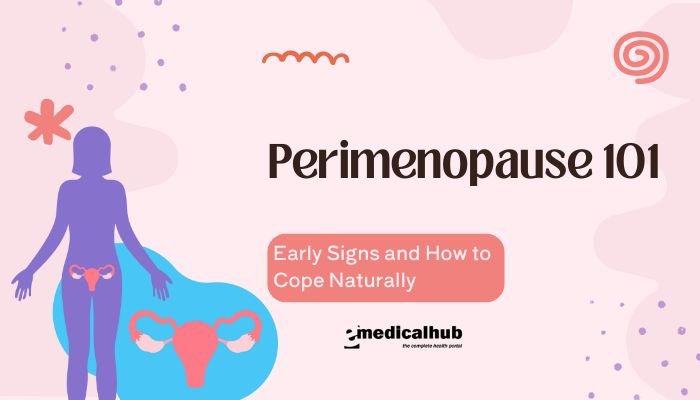Introduction
Osteoporosis, often labeled a “women’s disease,” affects millions of men as well, yet remains underrecognized in male populations. Characterized by weakened bones prone to fractures, osteoporosis can lead to debilitating injuries, especially hip fractures, carrying significant morbidity and mortality.
As men age, bone mass declines, albeit more gradually than in women. However, with longer life expectancy and risk factors like smoking, alcohol use, or sedentary lifestyle, men can reach critical bone density thresholds.
This article delves into the reasons osteoporosis in men remains overlooked, clarifies how men’s bone health changes over time, and outlines preventive strategies—from nutrition and exercise to clinical interventions.
By acknowledging men’s susceptibility to bone fragility, we can encourage earlier assessment, timely treatment, and better overall skeletal health.
Understanding Osteoporosis in Men
What Is Osteoporosis?
- Definition: A systemic skeletal disorder in which bones lose density and microarchitectural integrity, becoming porous and fracture-prone.
- Standard Measurement: Dual-energy X-ray absorptiometry (DXA) scanning yields a T-score. A T-score ≤ –2.5 indicates osteoporosis, while –1.0 to –2.5 is osteopenia (low bone mass).
- Fracture Risk: Even minor bumps or falls can result in fractures in advanced osteoporosis, commonly affecting the hip, spine, or wrist.
Bone Remodeling Basics
- Dynamic Process: Bones continuously remodel via osteoclasts (resorption) and osteoblasts (formation).
- Peak Bone Mass: Achieved around early 30s. Afterward, men experience a gradual bone decline at ~0.3–1% annually, influenced by lifestyle, genetics, and hormones.
- Estrogen’s Subtle Role: While testosterone is crucial for men’s bone, some of it converts to estrogen, which also helps maintain male bone density.
Prevalence in Men
- Statistics: In men over 50, ~1 in 5 experiences osteoporotic fractures in their lifetimes, similar to breast cancer incidence in women.
- Mortality Implications: Men’s post-fracture mortality can be higher than in women, partly due to older age at fracture occurrence and more comorbidities.
Key Insight: Osteoporosis is not just a female condition; men face notable bone loss and fracture risk, especially as longevity increases.
Causes and Risk Factors in Men
Primary vs. Secondary Osteoporosis
- Primary (Age-Related): Bone mass declines with age, associated with modest dips in testosterone and other androgens.
- Secondary: Caused by underlying disorders or external factors accelerating bone loss, e.g., chronic medication use or endocrine diseases.
Major Risk Factors
- Low Testosterone: Hypogonadism, whether from aging or medical conditions, reduces bone-building capacity.
- Chronic Glucocorticoid Use: Steroids for asthma, rheumatoid arthritis, or other autoimmune issues hamper bone formation.
- Alcohol Overuse: Excessive drinking impairs nutrient absorption, hormone balance, and bone cell function.
- Smoking: Nicotine and other toxins reduce calcium absorption and can degrade bone microcirculation.
- Long-Term Proton Pump Inhibitors (PPIs): Potentially hamper calcium absorption.
- Dietary Deficiencies: Inadequate calcium, vitamin D, or protein.
- Sedentary Lifestyle: Minimal mechanical loading undermines bone maintenance.
- Chronic Diseases: Celiac disease, malabsorption syndromes, or advanced kidney disease.
Hormonal Factors
- Androgens: Testosterone is key in bone density. Men with testicular failure or those on androgen deprivation therapy (e.g., for prostate cancer) see faster bone declines.
- Hyperthyroidism: Overactive thyroid can accelerate bone turnover, leading to net loss.
Undiagnosed or Overlooked Aspects
- Late Recognition: Many men only discover low bone mass after a fracture.
- Under-Screening: Unlike postmenopausal women, men are not routinely screened for osteoporosis, which can delay detection.
Signs and Symptoms of Osteoporosis in Men
Early Clues
- Often Silent: Bone loss rarely produces overt symptoms until fractures occur.
- Height Loss: Gradual shrinkage from vertebral compression fractures.
- Postural Changes: Rounded upper back (kyphosis), or neck stoop.
- Bone/Back Pain: Could indicate vertebral fractures or underlying structural changes.
Fractures as a Red Flag
- Minimal Trauma Fracture: Breaking a bone from low-impact stress (e.g., a simple fall, even from standing height) is a hallmark.
- Spine and Hip: Compression fractures or hip fractures cause severe pain, disability, and potential complications if untreated.
Co-Existing Conditions
- Dental or Jawbone Loss: Weaker alveolar bone can link to advanced systemic bone changes.
- Muscle Weakness: Reduced muscle mass might accompany chronic inactivity or low T, indirectly raising fracture risk.
Note: Due to the silent nature, many men remain unaware they have osteoporosis until a fracture occurs or a screening test reveals significant bone loss.
Diagnosing Osteoporosis in Men
Who Should Get Tested?
- Men Over 70: Some guidelines advocate baseline DXA for all men 70+ due to rising fracture risk.
- Younger Men with Risk Factors: Low trauma fracture as an adult, chronic steroid use, chronic diseases linked to bone loss, hypogonadism, or relevant family history.
- Lifestyle Indicators: Chronic heavy smoking, alcohol, or significantly underweight individuals.
Diagnostic Tools
Dual-Energy X-ray Absorptiometry (DXA)
- Gold Standard: Measures bone mineral density (BMD) at the hip and spine.
- T-score: Compares BMD to a young healthy reference; T-score ≤ –2.5 denotes osteoporosis.
- Z-score: Compares to age-matched norms, sometimes used to check if unusual for your demographic.
FRAX Score
- Fracture Risk Calculator: Integrates BMD (optional) and clinical risk factors (age, sex, BMI, smoking, etc.) to predict 10-year fracture probability.
- Guides Treatment Decisions: If FRAX risk is above threshold, therapy might be indicated.
Additional Labs
- Serum Calcium, Vitamin D: Checking to rule out deficiency.
- Testosterone: Evaluate for hypogonadism.
- Renal/Liver Function: Some chronic issues hamper bone remodeling.
Overcoming Underdiagnosis
- Awareness: Physicians and patients should stay alert to bone health, especially in older or at-risk men.
- Routine Screening: As guidelines evolve, men with risk factors or approaching later age should discuss BMD testing with their providers.
Preventive Strategies and Lifestyle Interventions
Nutrition
- Calcium: Men older than 70 need ~1,200 mg/day. Sources: Low-fat dairy, leafy greens, calcium-fortified products.
- Vitamin D: At least 600–800 IU/day recommended for adults. Some men may need 1,000–2,000 IU if deficient or living in low-sunlight areas.
- Protein Adequacy: Supports bone matrix. Lean meats, fish, beans, or Greek yogurt.
- Balanced Meals: Include vegetables, fruits, and whole grains for general metabolic health.
Exercise and Physical Activity
- Weight-Bearing Exercise: Walking, jogging, hiking, or dance put stress on bones, stimulating growth.
- Resistance Training: Lifting weights or using resistance bands encourages bone mass accrual, particularly beneficial in hips and spine.
- Balance and Core Work: Reduces falls, a major cause of fractures. Activities like yoga, tai chi build stability.
Modifying Risk Behaviors
- Quit Smoking: Smoking cessation typically correlates with slower bone loss rates.
- Limit Alcohol: Keep intake moderate—no more than 2 drinks/day. Alcohol disrupts calcium and vitamin D metabolism.
- Address Nutritional Gaps: Periodic check of vitamin D or correct deficiency with supplements.
Hormone Health
- Testosterone: Men with significantly low T might benefit from properly supervised hormone replacement, though the effect on bone density can vary.
- Screening: If symptoms of low T (fatigue, reduced libido) coexist with low BMD, evaluating endocrine function is prudent.
Medical Treatments for Men with Osteoporosis
Bisphosphonates
- Examples: Alendronate, risedronate, zoledronic acid.
- Mechanism: Inhibit osteoclast-mediated bone resorption, slowing the breakdown.
- Administration: Oral or IV. Must carefully follow instructions (e.g., upright posture for oral forms) to reduce esophageal irritation.
- Efficacy: Strong evidence of fracture risk reduction in men, especially in the spine and hip.
Denosumab
- Antibody Therapy: Targets RANKL, curbing osteoclast formation and activity.
- Delivery: Subcutaneous injection every 6 months.
- Use in Men: Effective for those with advanced bone loss or who cannot tolerate bisphosphonates.
Anabolic Agents
- Teriparatide (PTH Analog): Stimulates new bone formation if used in cycles. Generally recommended for severe osteoporosis or those who fail other treatments.
- Abaloparatide: Another PTH-related peptide analog with anabolic effects.
- Monitoring: Typically given by daily injection for up to two years, followed by antiresorptive therapy to “lock in” gains.
Hormone Replacement Therapy (HRT)
- Testosterone Therapy: In men with confirmed hypogonadism, T replacement can slow bone loss.
- Caution: Not recommended merely to treat osteoporosis in eugonadal men. Evaluate prostate safety and cardiovascular risk.
Combined Approaches and Duration
- Sequential or Combination: Some patients start with anabolic therapy, then switch to bisphosphonates or denosumab for maintenance.
- Review: Treatments might continue long-term, especially if risk remains high. Drug holidays or changes in regimen are considered to mitigate side effects.
Managing Fracture Risk
Fall Prevention
- Home Modifications: Clear trip hazards, ensure good lighting, use supportive footwear.
- Vision Checks: Correct poor eyesight to reduce accidental slips.
- Strength and Balance Exercises: Tai chi, yoga, or simple balance drills to stabilize posture.
Addressing Co-Existing Health Issues
- Hypertension: Dizziness from high medication doses can lead to falls.
- Neuropathy or Joint Problems: Neurological conditions hamper stability. Physical therapy can mitigate these.
- Medication Review: Sedatives or multiple meds can cause unsteadiness. Coordinating care with a pharmacist/doctors helps optimize prescriptions.
Vertebroplasty or Kyphoplasty
- Vertebral Fractures: In severe painful cases, minimally invasive procedures inject bone cement into the collapsed vertebra, stabilizing it.
- Controversy: Some evidence disputes efficacy. They are considered if persistent pain and disability remain unresponsive to conservative measures.
Living with Osteoporosis: Lifestyle and Psychological Aspects
Dealing with Diagnosis
- Shock: Men might not expect a “brittle bone” diagnosis. Education on the condition helps acceptance and fosters compliance with therapy.
- Gender Stereotypes: Societal misconceptions treat bone fragility as “feminine.” Overcoming stereotypes fosters proactive engagement in bone health.
Emotional Well-Being
- Chronic Pain: Vertebral fractures can cause ongoing discomfort or reduced mobility, impacting mental health.
- Support Groups: Online or local gatherings for osteoporosis patients can share experiences, coping tactics, and encouragement.
Maintaining Activity
- Adaptive Routines: If advanced osteoporosis limits high-impact sports, low-impact options (e.g., elliptical, aqua aerobics) keep muscles engaged.
- Nutrition Consistency: Lifelong attention to calcium/vitamin D, protein, and minimal harmful substances supports stable bone mass.
Summary and Key Messages
- Osteoporosis in Men: Underrated but a genuine threat. Men often discover late, post-fracture.
- Risk Factors: Age, low T, certain meds, smoking, heavy drinking, chronic conditions.
- Screening: Men ≥70 or with risk factors should consider DXA. Early detection spares complications.
- Lifestyle: Balanced diet, adequate calcium/vitamin D, consistent exercise. Quitting tobacco and minimizing alcohol matter.
- Treatment: Bisphosphonates, denosumab, or anabolic drugs can boost bone density.
- Fall Prevention: Minimizing fracture risk is vital; address environment hazards, vision, or medication side effects.
- Beyond the Stereotype: Bone health is equally critical for men as it is for women, so proactive steps improve long-term quality of life.
Conclusion
Men’s bone health deserves equal vigilance. By acknowledging osteoporosis risk, adopting preventive measures, and using appropriate therapies, men can maintain stronger, more resilient bones as they age. Regular screening for at-risk individuals and lifestyle modifications help avoid painful, life-altering fractures, affirming that osteoporosis is not a “women-only” concern but a universal one.
Frequently Asked Questions (FAQ)
- Is osteoporosis in men common?
- Though less common than in women, around 20% of Americans with osteoporosis are men. Prevalence increases with age.
- How do I know if I’m at risk?
- Risk factors include being over 70, family history, low testosterone, chronic use of steroids, smoking, heavy drinking, or having had fractures before.
- Should men take calcium supplements?
- If dietary intake is insufficient (less than ~1,000–1,200 mg daily) or if you’re at high risk. Best to confirm with a healthcare provider to avoid excess.
- What about vitamin D?
- Men with low vitamin D can’t effectively absorb calcium. Supplementation is often advised, especially in northern climates or with limited sun exposure.
- Does weightlifting help older men?
- Absolutely. Resistance training helps maintain/increase bone density and muscle mass, cutting fracture likelihood.
- Are men tested for osteoporosis the same as women?
- The gold standard is the same DXA bone scan. However, men are less frequently offered or advised such tests, so vigilance is needed.
- Can osteoporosis be reversed?
- While advanced bone loss is challenging, treatments can strengthen bones, reduce further loss, and even modestly increase density.
- If I smoke or drink, does quitting really make a difference?
- Yes, smoking cessation and lowering alcohol intake can slow or stop ongoing bone demineralization and improve therapy efficacy.
References
- National Osteoporosis Foundation. What is osteoporosis and what causes it? 2021.
- International Osteoporosis Foundation. Osteoporosis in men: Why change needs to happen. 2021.
- Cosman F, de Beur SJ, LeBoff MS, et al. Clinician’s guide to prevention and treatment of osteoporosis. Osteoporos Int. 2014;25(10):2359-2381.
- Looker AC, Melton LJ 3rd, Harris TB, et al. Prevalence of low femoral bone density. J Bone Miner Res. 2010;25(5):976-980.
- Watts NB, Adler RA, Bilezikian JP, et al. Osteoporosis in men: an Endocrine Society clinical practice guideline. J Clin Endocrinol Metab. 2012;97(6):1802-1822.
- Qaseem A, et al. Screening for osteoporosis in men: A clinical practice guideline from the American College of Physicians. Ann Intern Med. 2017;167(12):868-878.
- Lorentzon M, Cummings SR. Osteoporosis: the evolution of a diagnosis. J Intern Med. 2015;277(6):650-661.
- Siris ES, Adler R, Bilezikian J, et al. The clinical diagnosis of osteoporosis: a position statement. J Clin Endocrinol Metab. 2014;99(9):1899-1906.
- Beck BR, Daly RM, Fiatarone Singh M, et al. Exercise and Sports Science Australia (ESSA) position statement on exercise and musculoskeletal health. J Sci Med Sport. 2018;21(11):1118-1123.
- Bhasin S, et al. Testosterone therapy for hypogonadism in men: an Endocrine Society clinical practice guideline. J Clin Endocrinol Metab. 2018;103(5):1827-1843.
- Shoback DM, Rosen CJ, Black DM, et al. Pharmacological management of osteoporosis in postmenopausal women: an Endocrine Society guideline. J Clin Endocrinol Metab. 2020;105(3):587-594.
- Eastell R, Rosen CJ, Black DM, et al. Pharmacological management of osteoporosis in men. Lancet Diabetes Endocrinol. 2021;9(1):35-51.
- Cosman F, Nieves J, Dempster DW. Treatment of osteoporosis in men: recent progress in therapies. Best Pract Res Clin Endocrinol Metab. 2014;28(6):887-895.
- Dvořák M, Suchomel P, Rehak S. Minimally invasive management of vertebral compression fractures in osteoporosis. Eur Spine J. 2014;23(4):619-626.




